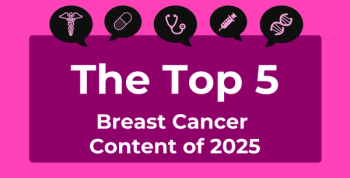
Why Health Care Must Bridge Social Services
Explore how integrated social services enhance health equity, as demonstrated by The Camden Coalition's innovative approaches to patient care and support.
Michael visited
Michael’s story, highlighted in a
The consequences of siloed systems and inaction extend far beyond inefficient resources. When health care and social services operate in isolation, vulnerable individuals fall through the cracks. A patient may receive excellent medical treatment in a hospital or walk-in clinic but return to unstable housing or food insecurity, virtually guaranteeing a decline in their health. When shelters are full or feel unsafe and there is nowhere else to go to find rest and warmth at 2AM, the emergency department often becomes the only accessible refuge. In fact, previous research has found that social determinants account for up to
To address some of these complex needs, integrated approaches that reach people both at the time of their visit and back in the community are a must. The Camden Coalition has pioneered 2 such pilots that may serve as models for replication in other health care systems across the country.
First, the Medical-Legal Partnership embeds attorneys directly into addiction treatment settings. When someone is seeking treatment, facing eviction, having insurance benefits denied, or facing a criminal charge can all be barriers to making it to their appointments. With the help of this partnership, patients gain access to free representation that can address the full spectrum of criminal and civil issues that impede recovery. A
Second, the
Both technology and human connection are essential in establishing effective and sustainable integration models. Connected data systems enable providers to see a full picture of a patient’s clinical and social needs, revealing patterns that are often hidden in isolated systems. When emergency departments, primary care, and social services share information, they can better coordinate care for all patients, especially ones that frequently visit multiple systems. Equally important is authentic teaming across sectors. Embedding community services—for example, behavioral health navigators, attorneys, or peer support specialists—into health care settings is one way to ensure patients can receive services where they already are, with continuity past the hospital walls and back into their community setting. This also helps create teams that understand both formal health care structures and informal community resources to provide culturally responsive assistance that traditional systems often cannot deliver.
To move health care integration from promising pilots to widespread adoption, 2 fundamental shifts are essential. First, we must transform our payment systems. The current fragmentation in health care reflects disjointed funding streams. Fee-for-service models that focus exclusively on clinical services reward volume over outcomes and discourage addressing social factors that drive health care utilization. Value-based payment approaches may provide flexibility to address whole-person needs, including housing, nutrition, and legal services. Performance incentive programs like the New Jersey Quality Improvement Program can encourage hospitals to focus on supporting patients in connecting to services following an emergency department or hospital visit but only financially benefit the hospital with no support for community-based services that are critical to achieving those metrics. New Jersey’s new
Second, we need infrastructure that enables cross-sector collaboration. This includes not just shared data systems but also mechanisms for easily pushing key care coordination tools like shared care plans into individual electronic health systems. To do this, there needs to be trust built across competing health and community partners. There is also a need for backbone agencies to strengthen the ecosystem of care by acting as neutral partners that bring together competing systems to create accountability for shared outcomes and provide opportunities for collaboration.
Some may argue integration is too complex or costly, but the status quo of cycling vulnerable individuals through emergency services without addressing root causes is far more expensive, from both a financial and human suffering lens.
When integration works, it truly is transformative. With integrated care, a person experiencing homelessness will receive not only medical treatment but also housing support. A parent struggling with addiction gets treatment alongside parenting support and legal assistance. A person seeking care in the emergency room for a panic attack meets a navigator who helps take them to the pharmacy the next day and connects them to counseling in their community.
The models for bridging social services with health care already exist, and the preliminary evidence is clear, with lots of opportunity for further evaluation. It is now high time that we further break down the silos and create integrated systems that cohesively respond to the complex and diverse needs of patients.
Author Bios
Kevan Shah, MSc, MSM, is an MD candidate at Cooper Medical School of Rowan University. He is the founder and executive director of End Overdose Together. Views expressed are my own and do not reflect those of affiliated organizations
Leigh Wilson-Hall, MSW, is the Director of Care Management & Redesign Initiatives at the Camden Coalition.
Jubril Oyeyemi, MD, FHELA, is the Chief Medical Officer of the Camden Coalition, the Medical Director of the Community Health Institute at Virtua Health, and the Founder and CEO of the Cherry Hill Free Clinic.
Newsletter
Stay ahead of policy, cost, and value—subscribe to AJMC for expert insights at the intersection of clinical care and health economics.









































